T. Belman. This is the reality that MBS is embracing and why he is supporting a ME-NATO
Abysmal demographics and tribal traditions mean the Muslim world will fall while a more modern Israel rises
by Spengler; August 15, 2024
United Nations’ demographers project that, by the end of this century, Turkey’s labor force will fall by half and Iran’s will fall by two-fifths while Israel’s will double.
Turkish women in 2023 were estimated to have an average of just 1.5 children over their lifetime, half of Israel’s total fertility rate of 3 children per woman. The World Bank puts Iran’s 2022 fertility rate at 1.7.
Improbable as it may seem, the core scenario according to present trends will make Israel the economic center of the Middle East sometime toward the end of the century.
The race is not to the swift nor the battle to the strong, Damon Runyon offered, but that’s how the smart money bets. Any number of things could upend a linear projection of present trends. The exercise nonetheless leads to striking conclusions.
Chart: Asia Times
Israel’s per capita GDP is now about US$55,000, or five times Turkey’s $11,000. One might quibble about the yardstick, but there is no doubt that Israelis produce more than Turks do. If these trends continue, Israel’s GDP will exceed Turkey’s by sometime in the middle of the present century.
There is no question as to the cause of declining fertility in Muslim countries. Female literacy disrupts the norms of traditional society. Once Muslim women achieve a certain educational level, they reject the constraints of tribal society along with marriage and motherhood.
The link between female literacy and fertility is well documented by academic studies in the case of Iran, as I reported in my 2011 book “How Civilizations Die, and Why Islam is Dying, Too.”
In the case of Turkey, the evidence is overwhelming. The chart below compares the female literacy rate as reported by the World Bank (left-hand axis, inverse scale) and the total fertility rate.
The same pattern emerges from a comparison of female literacy rates and total fertility rates in countries where female literacy is less than 60%:

Chart: Asia Times
The poorer countries of the Global South are repeating the so-called demographic transition of the West (from agricultural traditional society to modern urban society), but in a fraction of the time.
That leaves Iran and Turkey in a dilemma. Turkey now makes more cars than France and has built its own modern fighter plane. Iran has demonstrated its prowess in missiles and drones and is close to, if not past, the point of a nuclear breakout.
Both can educate scientists and engineers at world standards in significant numbers, but they can only do so by giving their people an off-ramp from traditional society.
In different ways, the Iranian and Turkish governments seek to preserve traditional Islamic mores – Iran in a far more pervasive and oppressive way, to be sure. But their efforts to impose Islam from the top prompted many of their most talented to emigrate.
“For many, the way out is through education visas to study abroad or work permits,” the Associated Press reported last year in a study of Turkey’s brain drain. “TurkStat, the government’s statistics bureau, said 139,531 Turkish citizens left the country in 2022, compared with 103,613 in 2021. Those aged 25 to 29 formed the biggest group,” the AP report said.
The fastest decline in fertility has occurred where fertility was highest. In the case of Turkey, the biggest drops in fertility between 2010 and 2022 were registered in the provinces that had the highest fertility rates in 2010.
Nine Turkish provinces had total fertility rates (TFRs) higher than 3.0 in 2010. In 2022, there was only one. In 2010, not a single Turkish province reported a TFR below 1.5.
By 2022, 43 provinces showed a TFR below 1.5. These are the most urbanized parts of Turkey with the highest economic growth. The Kurdish-majority southeast of the country includes all the provinces with TFRs above 2.0.
The most modern and economically buoyant provinces of Turkey, that is, show extremely low fertility rates.
Without a drastic increase in productivity, Turkey, Iran and other countries will face catastrophic retirement crises. Assuming constant fertility, Turkey and Iran will have 70 retirees for every 100 workers in 2100, compared with just 14 today.
Both countries have the potential to raise productivity, at least in principle: Iran’s labor force participation rate is estimated at just 46% by the World Bank, and Turkey’s at 56%. The female labor force participation rate in Iran is just 14% and just 36% in Turkey. The corresponding data point for the United States is 58%.
In Israel, 60% of women are in the labor force, including 80% of Haredi (ultra-Orthodox) women. Haredi women on average have six children, and nonetheless find employment (the labor force participation rate for Haredi men is 55% because a large proportion of ultra-Orthodox men devote themselves to religious studies).
Computer programming is a favorite occupation; it draws on skills in language and logic that are cultivated by religious education.
Israel is unique in adjusting traditional life to the modern economy. It is the only industrial country with a fertility rate above replacement, and it has succeeded – albeit partially and with considerable friction – in integrating most of its growing ultra-Orthodox population into skilled occupations. The trade-off between female education and fertility doesn’t exist.
Regarding the two most powerful Muslim countries of the Middle East, we can only say that they are far from resolving a deep social dichotomy between pre-modern and post-modern life. Turkey and Iran may succeed, but present trends point instead toward stagnation.
It is entirely possible that Israel may emerge as the largest economy in the region, which would have been seen as an improbable outcome for a small country that began with a Jewish population of just 600,000 in 1947.
Spengler is channeled by David P Goldman. Follow him on X at @davidpgoldman


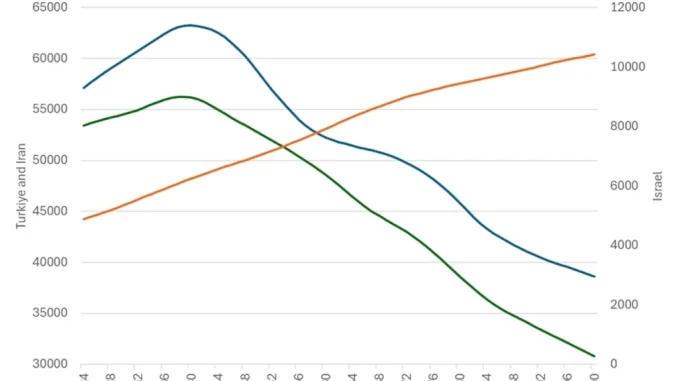
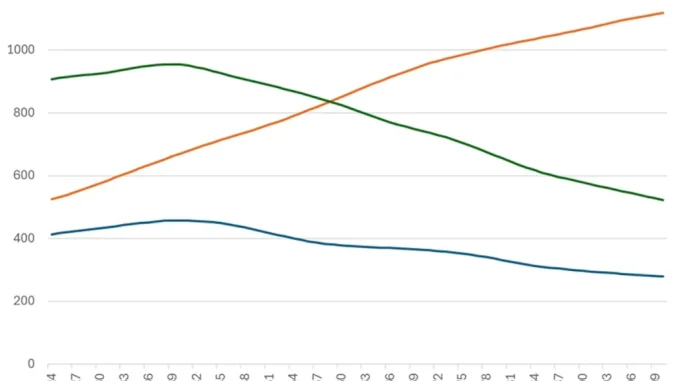
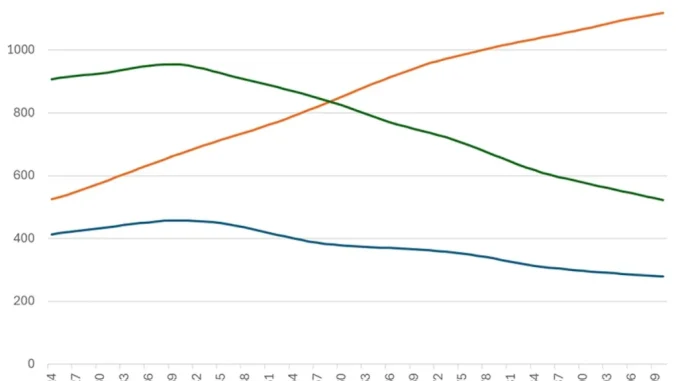
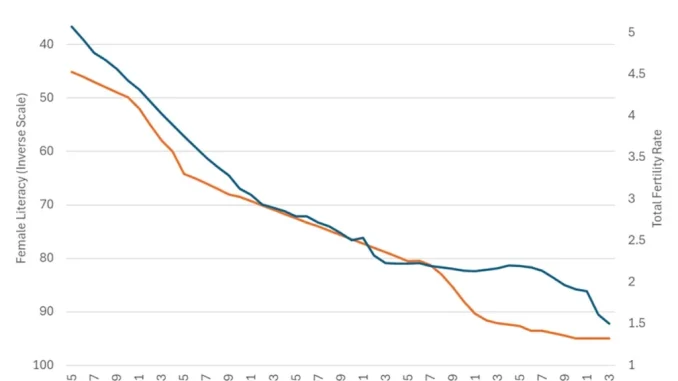
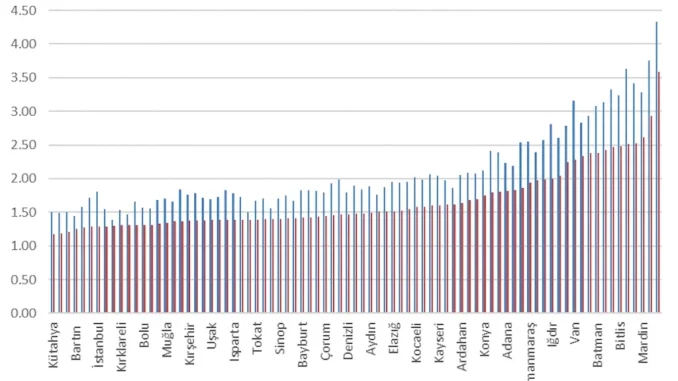


Leave a Reply
You must be logged in to post a comment.